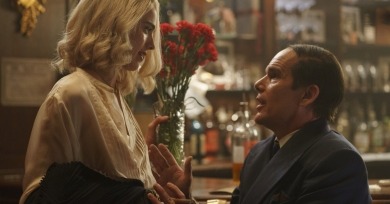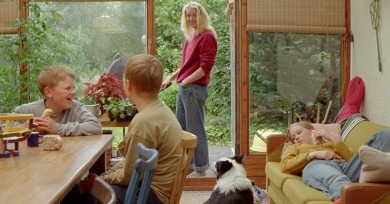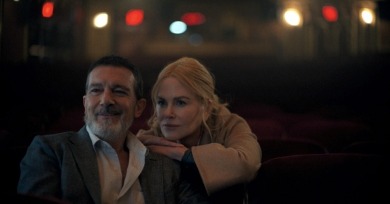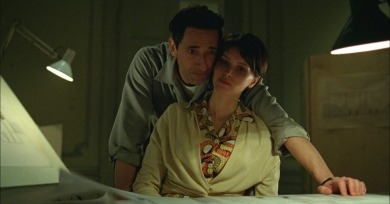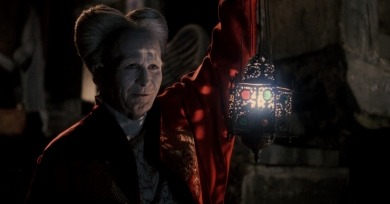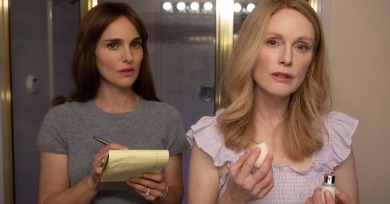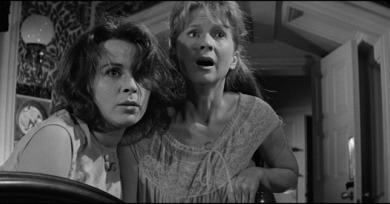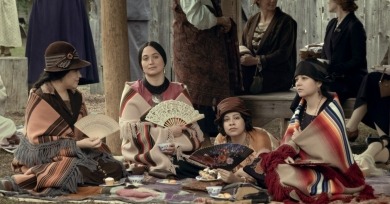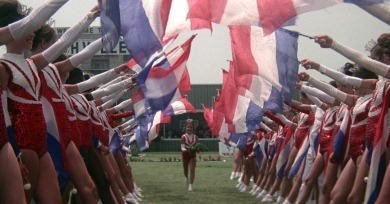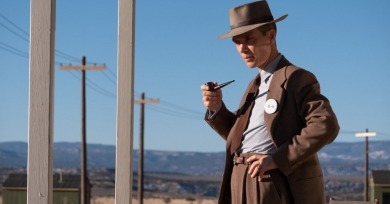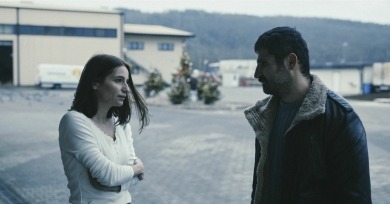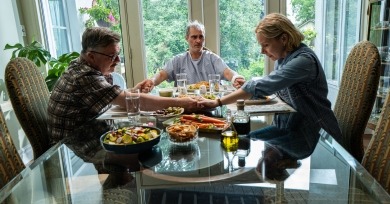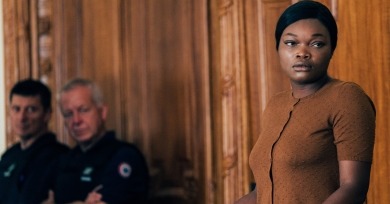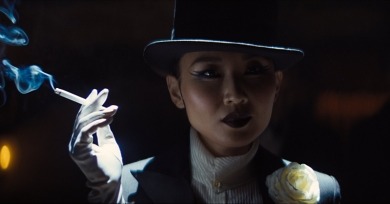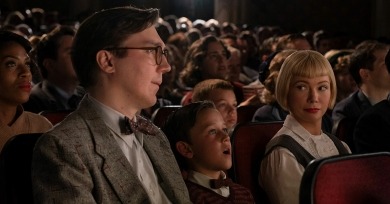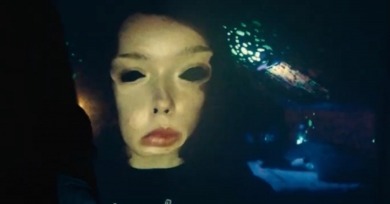Michael Koresky
For this new symposium, we asked our contributors to pitch an idea for an essay centered around a film that somehow utilized or enabled a technology (relatively new or more widely available at the time of its making) that was indivisible from the experience, meaning, or aesthetics of the film itself.
A Few Great Pumpkins
The Bad Seed, Halloween III: Season of the Witch, The Black Tower, Cure, Christine, What Lies Beneath, and When Evil Lurks.
With its breathless, alert script, Blue Moon manages to keep expanding and contracting from its central dramatic concern, using the breakdown of Rodgers and Hart's creative partnership to tease out age-old paradoxes between art and commerce, hope and despair, commitment and compromise.
Outside the context of the film, the piano score might sound like the accompaniment for a toasty night by the fireside. Yet Hunt’s minor chords and capricious melodies allow the film a gracious domesticity that works in contrast to its swollen, poignant portrait of disintegration.
Whatever delights the film offers are of the generic variety, teasing at thriller and melodrama conventions while constantly pulling back to the realm of the purely psychological, a tense negotiation of the raw and the sleek as unresolved and tentative as its central adulterous couple’s stabs at kink.
Shot on 35mm in shades of ominous gray by cinematographer Lol Crawley in the mid-century VistaVision format, the film is so gripping moment to moment that it’s almost convincing in its determination to be a definitive American epic.
A Few Great Pumpkins
Bram Stoker's Dracula, The Mask, Arrebato, The Stuff, Cuadecuc, vampir, Tall Shadows of the Wind, Drag Me to Hell.
It is a narrative of clear-cut boundaries and simple symmetries, but within them it contains galaxies of emotion; Haigh has found the precise outlines in which to color in a meditation on the strange, liminal experience of gay male existence.
Haynes is doing something extraordinarily delicate and difficult in May December, reminding viewers, with the lightest of touches, that we are all implicated and indulgent in the processes of social, cultural, and sexual exploitation that define the modern consciousness.
The anxiety of influence is real for a critic: no matter how confident we may be in our opinions and discursive and fair in our aims, we are, like those in any other field, not immune from the methodological skepticism our peers sow in us.
A Few Great Pumpkins
The Haunting, Cat People, Possibly in Michigan, The City of the Dead, Dragonwyck, The Eternal Daughter, Ghostwatch
Scorsese shows how the brutality of American history begins on the smallest scale, that the human capability for deception and self-justification breeds epochal, even genocidal shifts—microcosmic expressions of large-scale historical atrocity.
We asked our contributors to select a film they have written about in some form in the past. It could have been a review, a term paper, a passionate email, or a Post-it note. The writer may disagree with what they wrote, or they may stand by it. Nevertheless, they are now a different person, and we wanted to know about their personal journey with this particular film.
Oppenheimer, with its achronological historical narrative, crosscuts among different time frames, and though it has just one inevitable outcome (the annihilation of humanity), its biopic structure gives it an inherent tidiness it is constantly working against.
Mungiu maintains his penchant for slow-building narrative tension, gradually revealing dramatic stakes, yet rather than focus exclusively on one or two characters clearly wending their way through an economically dramatized moral dilemma, he takes a more panoramic approach.
Beau Is Afraid is inherently contradictory: confident, muscular cinema about emotional atrophy and living with profound insecurity. I sat down with Ari in a bustling East Village cafe, where, over the sounds of clanging coffee filters and hissing steamers, we discussed his latest film, beloved inspirations, and the terror of putting things out in the world.
I cannot imagine seeing something more compositionally thought-through and artfully constructed in the current cinema, or something that more compellingly refuses to divulge its secrets while also maintaining a constant engagement with so many legible ideas.
For most of its running time, Babylon barrels past any possibility of wistful reverie, content to wallow in excess and sin, only to devolve in its final third into meditations on the power and beauty of the image.
Though this is perhaps the ultimate Spielberg film, it does not move or feel like one. He is going for something else: a thoughtfully unshowy aesthetic that heightens one’s awareness of being a viewer. Watching, we’re rarely thinking about what the camera is doing, but rather what it is showing and why.
A Few Great Pumpkins
We’re All Going to the World’s Fair, The Funhouse, Ginger Snaps, Frenzy, Maniac, Baby Blood, Possum


